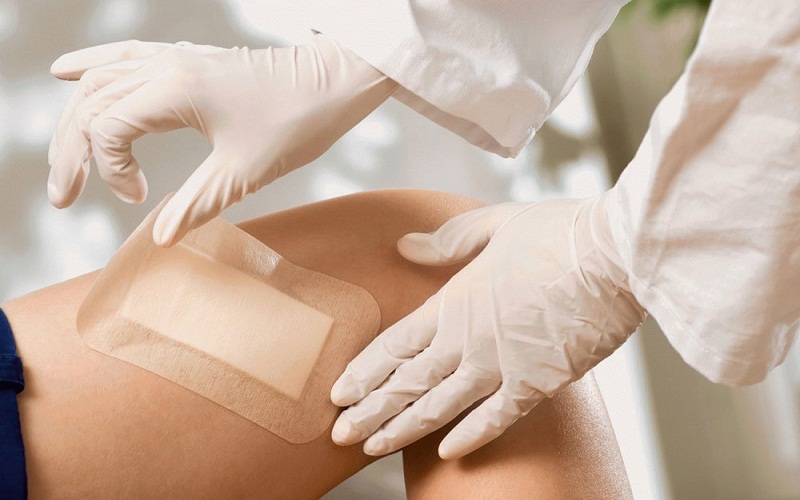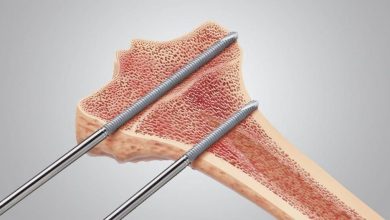Wound healing: what do we do when leg ulcers do not heal?

It often happens that we are applying treatments, consulting with a multidisciplinary team and following the guidelines of the clinical practice guidelines, but still we do not get wound healing in some of our patients.
In our first post, in which we talked about leg wounds , we said that we often associate them with vascular ulcers. However, this is not always the cause of these injuries.
Complications in wound healing
We said that establishing a differential etiological diagnosis between the types of wounds that we find in the legs is essential to apply the best possible treatment and achieve its cure.
However, there are some wounds that are treated for many years, that evolve poorly, that do not heal, and we never get to know the causes that produce them. Since they are located in the legs, in many cases they are treated as vascular ulcers without being it .
I do not know if the overall percentage of these patients is high or low, but I do know one case in my Health Center where after almost 15 years of treatments with multidisciplinary intervention of Dermatology, C. Vascular, M. Internal, C. Plastic, Home Hospitalization, SUE (Outpatient Emergency Service) and Primary Care, we still do not know the cause of these injuries, and, of course, the wound has never been cured. In these 15 years, it has been better or worse, but it has never been cured, and it has not been for not trying different local treatments, dressings, master formulas, lasers, even a graft was performed that did not catch anything and that for a long time generated Two wounds: the donor area and the ulcer.
During all these years of coming and going to the hospital with some income that another, the ulcer remains untouched , the multidisciplinary team is shrinking, the patient is already very old – now she is 92 years old, with good quality of life, very well oriented and very well cared for by his family. Of all the multidisciplinary team, there is only Primary Care and, specifically, her nurse who knows her and has treated this leg ulcer since its inception and that in these 15 years has faced the management of exudes, infection, tissue necrotic, of dressings, of masterful formulas … and has always insisted that “we have to know the cause”, but to this day wound healing has not been achieved. The ulcer is unhealed and we still do not know its cause.
What can we do now?
Our goal is not to be a cure, our goal will be to comfort the patient, control pain, avoid infection, manage the abundant exudes and keep thinking what will be the cause of this ulcer?
Different moments of ulcers in 15 years of evolution without filing their cause
We find other cases in which we know the cause that has generated the ulcer, a multidisciplinary team intervenes : C. Vascular, C. Plastic, Geriatrics, Internal M., Nutrition, Phlebotomy, H. Home, Primary Care and, a Despite applying the best therapeutic options at every moment, we do not achieve wound healing. What happens so that the ulcer does not heal? Are we doing a comprehensive assessment of the person or are we focusing on the ulcer?
It is the case of a patient of 82 years conscious and oriented, although we can not say that very cooperative, who suffers from venous ulcers for 8 years. This patient has been treated in C. Vascular and Primary Care most of the time, and her diagnosis is venous ulcer in MII.
One of the characteristics of venous ulcers is the abundant exudes, and therefore we face applying the dressings that best manage the exudes and even use negative pressure therapy , but nothing is effective, there is always a problem that makes us stop treatment .
The infection is a constant threat, we are always vigilant, we perform cultures, we treat with antibiotics and we even fight the cellulite that require systemic treatment, but nothing is effective to prevent or avoid the infection.
Physiotherapy is performed with micro foam, which makes it temporarily improve, but the ulcer is not cured. The Phlebotomist says that this therapy can not be applied anymore and, while the multidisciplinary team is decreasing, it is the primary nurse who faces the cure and the patient.
Being a venous ulcer, how not to consider a compression therapy, since it is the cornerstone in the treatment of these injuries. We propose a multiplayer bandage that does not support, she takes it off herself. Later, we tried it with compression stockings but it also takes them off.
The extension of the lesion is increasingly greater and more difficult to manage in Primary Care, so, by indication of C. Vascular, a skin graft is performed. Perfect! This seems like the solution. But little joy lasts, because the graft does not heal completely and return to be as in the beginning or worse, since the ulcer is larger in extension with a very abundant exudes that requires daily cures: In addition, it has fibrin, which requires debridement surgical with hospital admission, and again we are in the home with a clean ulcer, with granulation tissue, abundant exudes and a patient who does not fit into any of the clinical practice guidelines. The therapeutic options are running out, the multidisciplinary team is decreasing and, again, it is the primary school nurse who faces each day with this patient and her ulcer.
How to achieve wound healing when reality exceeds all theories?
This is a reflection I want to make with these two cases that I describe, which are certainly not unique. In both cases it is very frustrating for the PC nurse not to get wound healing after so many years of treatment and effort, in one case due to ignorance of the cause and, in the other, by the patient. In the first case, to ignore the cause leads us to not achieve the goal of healing that we had initially set ourselves, so we must rethink our objective. In the second case, the problem is posed by the patient and, therefore, we will have to make an integral approach to the person to set ourselves a healing goal.
Knowing the cause of the ulcers and the integral approach of the person are two fundamental aspects to rethinking objectives regarding the healing of difficult wounds.







